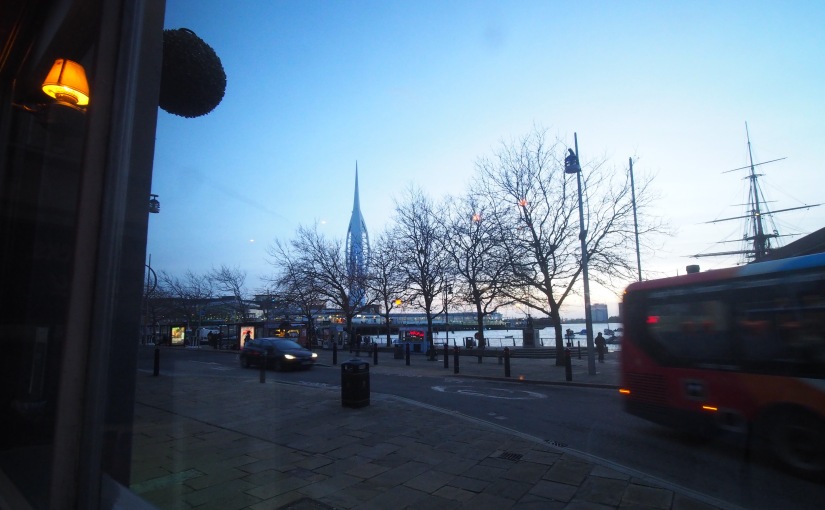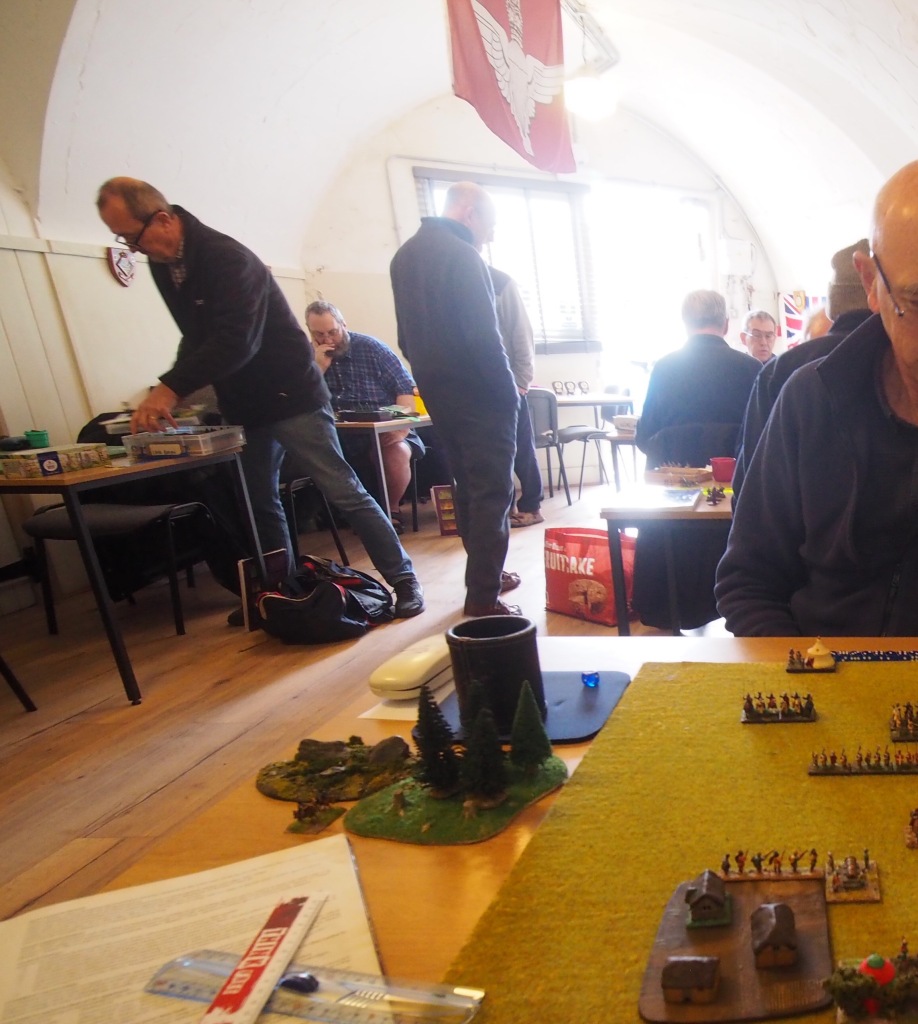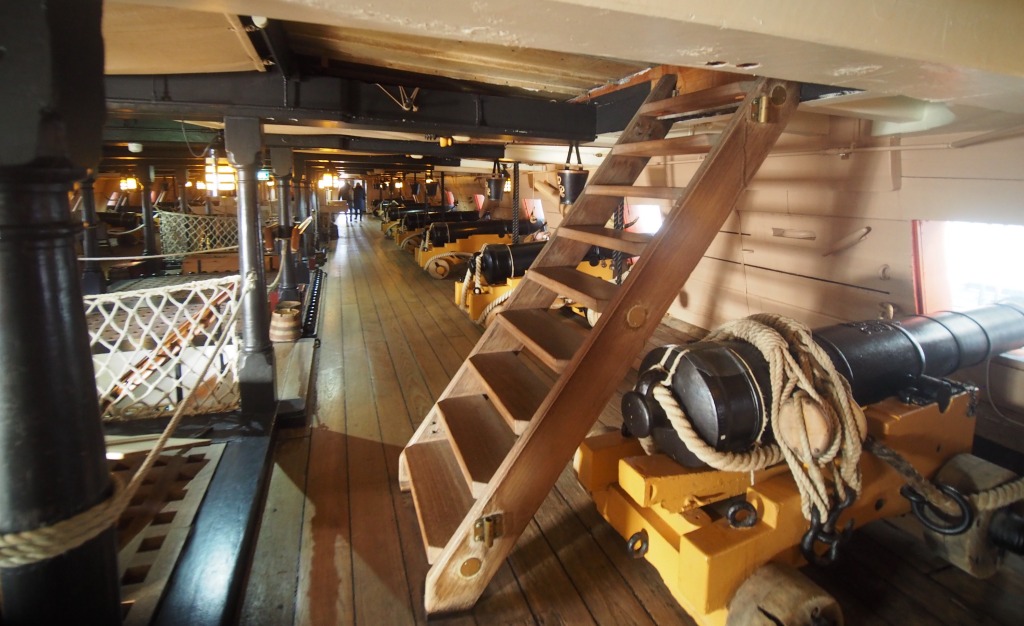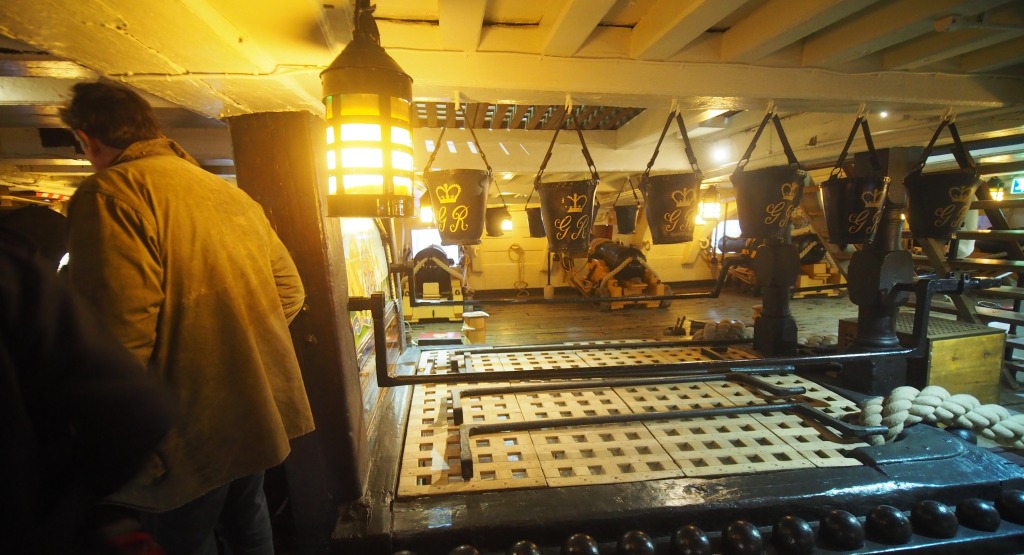I spent the second half of August last year in Iceland. It was the end of a long retirement-celebrating summer holiday in Denmark, Sweden and Norway (with Travelling Companion) and the Faroes.
Iceland was not the most beautiful of these places. There were some striking modern churches…


Reykjavik
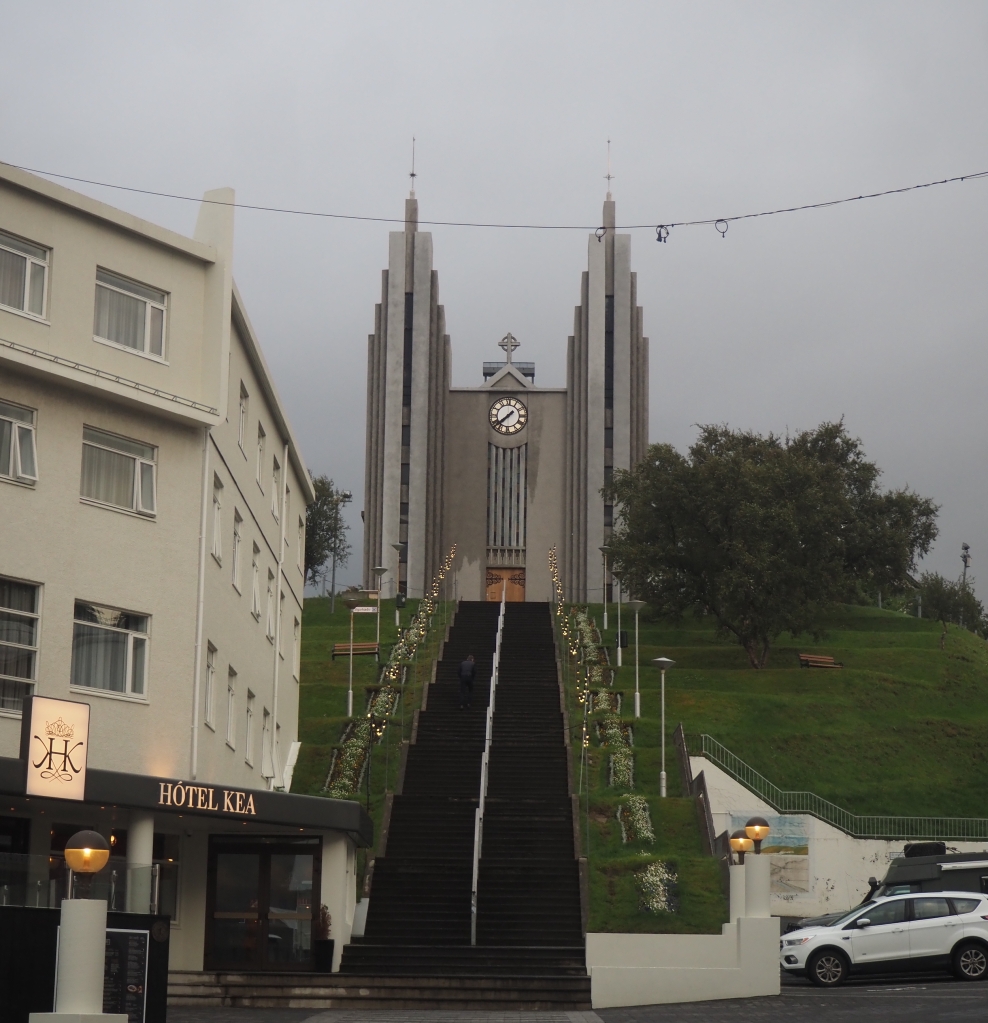
Akureyri
… but for every one of these there were a thousand utilitarian buildings like the hotel on the left in the last picture; as in that picture, most days were grey.
But, I found Iceland the most engrossing place. This post is long. It includes:
- What I didn’t do
- What I did: Faroe Islands-Reykjavik
- Reykjavik
- Reykjavik-Isafjörður in the Westfjords
- From Isafjörður back to Seyðisfjördur
- Some noticeable things
- The trip home
- Thoughts
I – What I didn’t do
I didn’t visit geysers and waterfalls, though I saw them from buses.
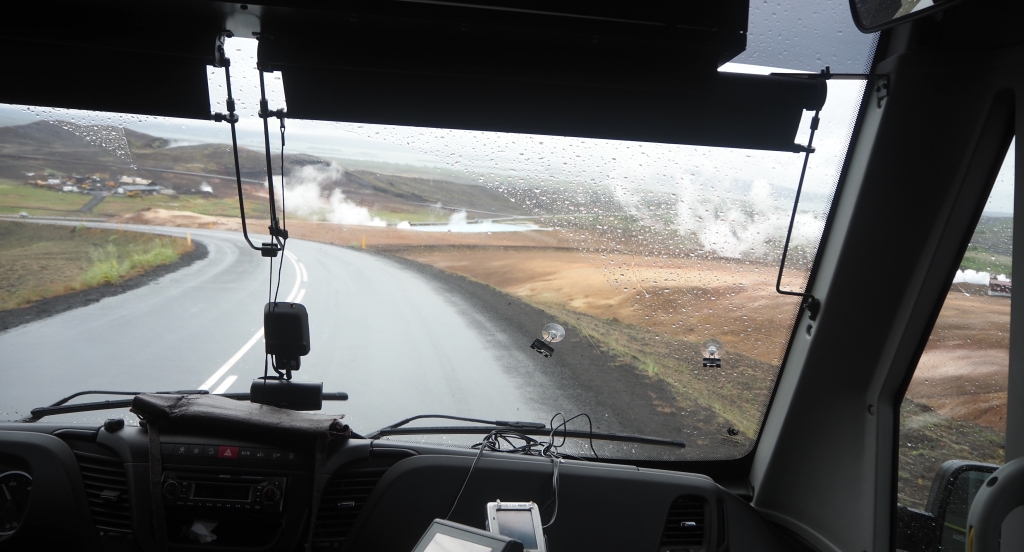

I didn’t go to the Golden Ring. I didn’t visit any of the glaciers or walk in any of the hills. Except for going to museums (at Selfoss, Reykjavik, Borgarnes and Isafjörður), I didn’t visit the country properly at all.
The main reason for this is that I can’t drive. I didn’t drive off the Norröna ferry in a camper van when it docked at Seyðisfjördur; I didn’t hire a 4×4. Nor, when, planning the trip, I discovered it is 661 km from Seyðisfjördur to Reykjavik and quite windy, did I cycle. I went everywhere by bus.
The worst territory for public transport, the geography in which it finds it hardest to hold its own with the private car, is a featureless plain. If Iceland has plains, I did not see them. Instead it has lots of lovely steep valleys, sinuous peninsulas and a single ring road – ideal for trains and buses. But only two locomotives have ever run in Iceland. They served the improvement of Reykjavik harbour in the 1930s. The bus service is a neglected thing, though conducted by people who always want to squeeze you in. Instead, the country has given itself over to the car. Excluding microstates, Iceland has the fourth highest rate of car ownership in the world, after New Zealand, the US and (oddly) Poland, at 840 per 1000 people. This compares to 635 in Norway, 545 in Sweden and 540 in Denmark1 – and surprisingly, to 521 in the Faroes. (Faroes government figure; perhaps boats make up the difference there.) Without a car or a bike, Iceland is hard to visit.
I had no plan or structure for my visit. In retrospect I could have structured it around beer. Beer was banned in Iceland until 1989. Now there are micro-breweries. Not allowed to sell beer to take away, they have added spartan bars on. I visited three of these, in Egilsstaðir, Selfoss and Isafjörður. At Isafjörður I picked up a leaflet pointing you to twenty-odd more; you can get the leaflet stamped when you go there. Going to more of these, while travelling as I did, would have given a story to my visit; but I didn’t think of it till afterwards.
II – What I did: Faroe Islands to Reykjavik
The Norröna, the ship I came in on, is the same ship that brought me from Denmark to the Faroe Islands. Compared to that first voyage, the one from the Faroes to Iceland was quiet. I looked at the numberplates of the queue of vehicles waiting to board in Tórshavn. Netherlands, Germany, France, France, Iceland, Iceland, Iceland. No FO plates for the Faroes.
This voyage was the first time that the UK Shipping Forecast, with gale warnings in red, has meant more to me than an early morning incantation on BBC Radio 4.
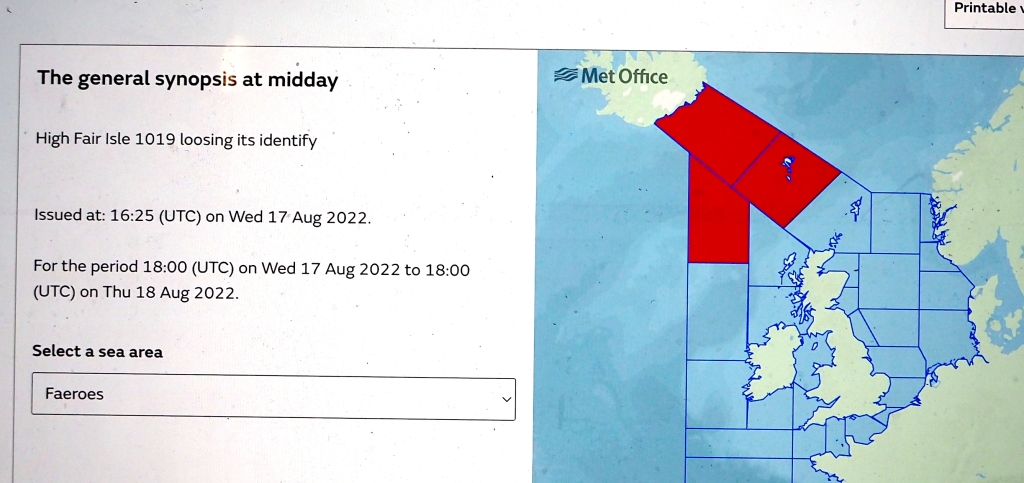
The ship tipped from side to side. Little dips to the front. In a plane this would be upsetting. When I used to fly regularly I would say, to reassure myself, the pilot knows what they’re doing. Here I said, the ship knows what it’s doing.
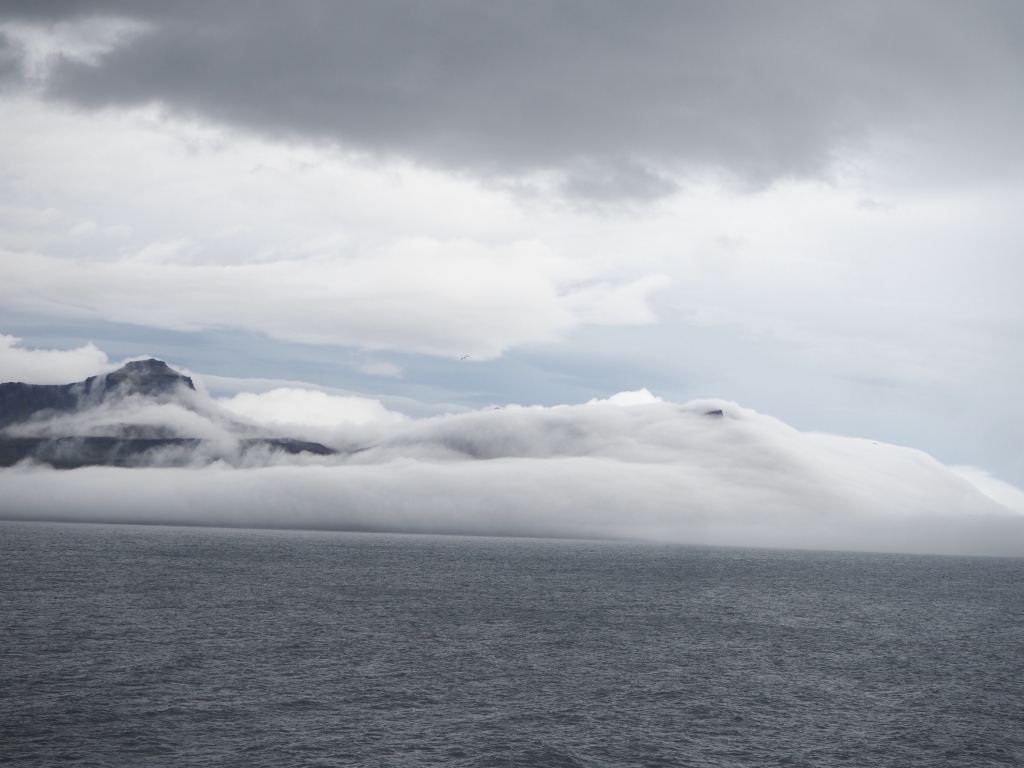
First view of Iceland
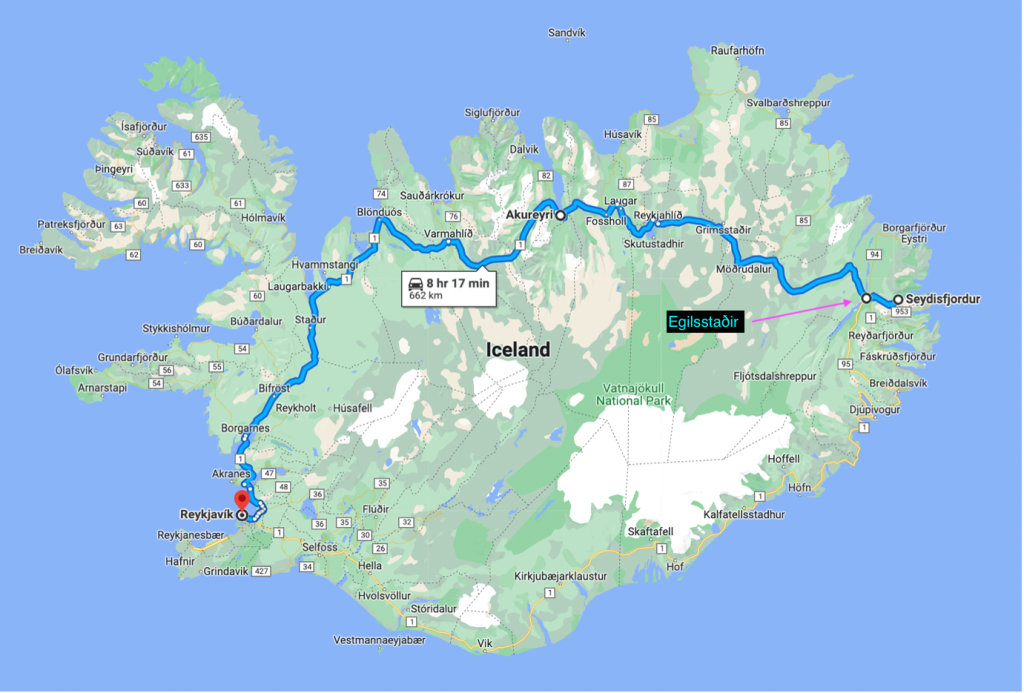
We landed at Seyðisfjördur, at the start of the morning in the rain, in the east of Iceland. Iceland is in Schengen and there were only random passport checks.2 The door of the Hotel Aldan was welcomingly open for breakfast – already Iceland felt less stern than the Faroes. From there I caught a small crowded minibus over the mountains to Egilsstaðir. We passed someone cycling uphill on the narrow road (they are all narrow) in the rain. I did right not to make that choice, I thought.

In Egilsstaðir I ate a good lunch in the Nielsen restaurant in a converted private house.

An Icelandic couple run it. For summer help they’d taken on a young Polish couple.
Egilsstaðir is a town with no centre. Children wearing helmets rode their bikes on the road without adults. In the evening I went for a pizza at the local micro-brewery. It came with jam on the side. The TV was showing the English football league, Brighton v. Newcastle.
In Taipei the next day, Sister-in-Law gave birth to twin Nieces. I caught a bigger minibus to Akureyri on the north coast and showed strangers the photos Brother sent. At Mývatn five wet Swiss cyclists were waiting to get on the bus, which accommodates only three bikes.
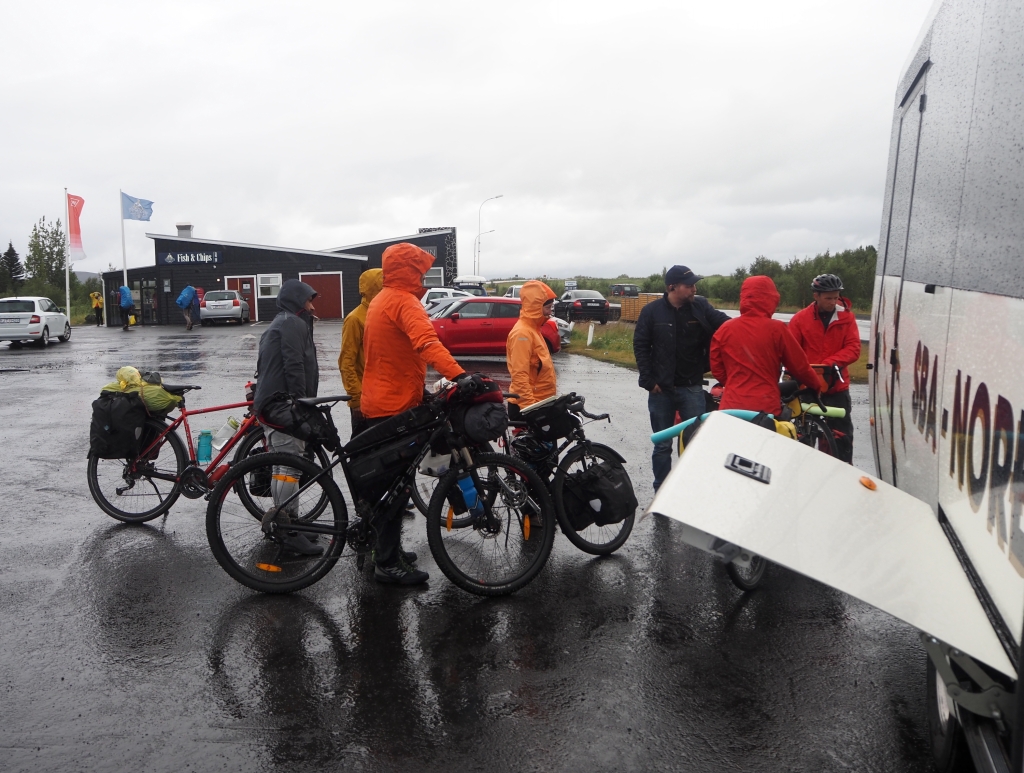
The driver fitted them in.
In Akureyri I met an Icelandic couple and began to work out what I was doing on the trip (see https://paulhhodson.wordpress.com/2022/08/23/touring-in-the-nordic-countries-9-travelling-on-my-own/ ). I ate first class mussels from the Westfjords.
Akureyri is Iceland’s second city. It is where the best bars that I went to were – Gotabarrinn, Vamos, the R5. It has a direct, full-sized bus to Reykjavik. In sunshine at last, the road went inland and we passed cows down in the valley, sheep higher up the pass, hay being cut. In a field near the road two men dug, watched by a largish dark dog. A man fishing in a river – nets standing in a small stream – a golf course.
We stopped for lunch at a service station near Staðarskáli.You could order pizza and other hot dishes, going up to get them when your number was called out. The staff, except for one sulky young man, called the numbers out in English. Only.
About five, when I reached my hotel in Reykjavik, I found opposite it, based on my experience of the Faroes and Iceland so far, something that shouldn’t exist: a triangular street corner laid out as the terrace of a bar, the Bodega. The tables and the chairs were not plastic. It was warm enough to sit out. The bartender said, We try to have it outside as if in Europe, you know – and cosy inside.
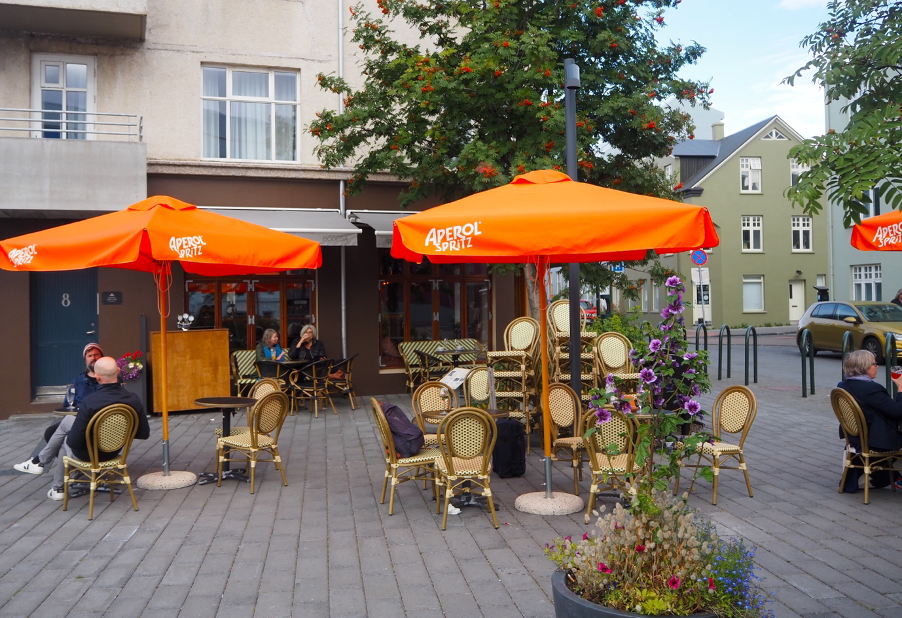
Inside the bar there was a constantly projected video artwork by Ragnar Kjartansson called Figures in Landscape. If it’s still being shown, it’s worth a visit.
III – Reykjavik
I spent five days in Reykjavik. I got my suits drycleaned, one then the other, they lasted me all the way home, and had my hair cut.
I went to the game shop Spilavenir and bought an Icelandic variant of the game Love Letter. The bus to the game shop had this sign on its door:

Does it mean Make sure to close the door of your bird cage to avoid birds being eaten by dogs or cats?
One sunny afternoon, as I was sitting outside the Bodega, two sax players and a drummer rolled up and played some simple jazz. I expected one to come round with a hat, but after three songs off they just went. Next a seagull dropped a buttered piece of baguette, a big one, like a bomb. The woman on the next table chucked the bread away to avoid the gulls coming back. They are vultures she said in a soft Icelandic accent. Fulchusss. I asked her to photograph me in my clean suit.

I swam in the outside pool at the Sundhöllin baths. When I got back the hotel receptionists asked if I saw anyone famous. No, I said; but also no one really large, nor really old.

Another day I got the bus to Selfoss to see the grave of the chess player Bobby Fischer. It is in a peaceful churchyard a couple of kilometres further on. More peaceful than his life. He was a difficult man yet he won love from Boris Spassky, his famous opponent3, and from people in Iceland.

I wanted to go to Thingvellir for democratic reasons – it is the original site of the world’s first continuous parliament – but the nearest bus stop is 29km away from it.
Coincidentally, my friends Ms C and Ms D arrived in Reykjavik on my last night. We gossiped about work in trendy Reykjavik bars.
I bought sweets for the onward journey in a supermarket. People operating the customer-operated till could choose to do so in Icelandic, English or Polish.
IV – Isafjörður in the Westfjords
In the 1990s, already dreaming about visiting this country, I got the third edition of the Lonely Planet guide. Believe it or not, the guide said, Isafjörður (a fishing port up in the west fjords) boasts a new Thai restaurant. That made me want to go there; and there I went. You can only go on a Friday afternoon. You can only come back on a Sunday. From Reykjavik it takes three buses.
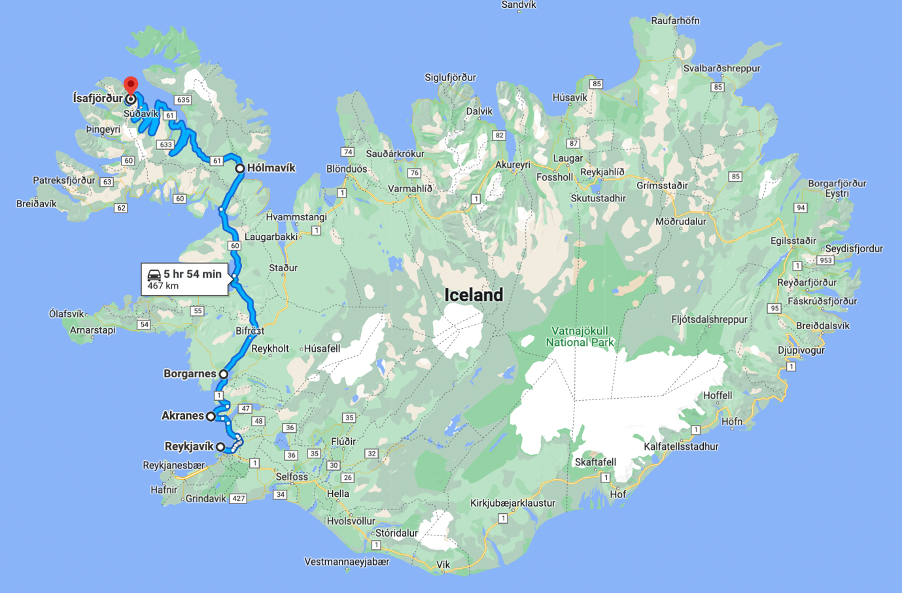
I broke my journey to have a falafel lunch at a café in Akranes. A tall man chatted with the fair-haired owner. I don’t have a game till Sunday, he said to her in English. I asked him if he was a goalkeeper. Yes, he said, for ÍA Akranes, the town’s football club, which plays in the national league. He was Croatian. Afterwards the owner told me that the town’s basketball club is always trying to steal him away.
The last bus of the journey, from Hólmavik to Isafjörður, had a crew of two. One drove and one spoke English. The evening drew in. We passed an isolated church. I thought of people walking and riding to it from far, on Sundays. As we looped round fjords I thought, this is a place it doesn’t make sense to go to by road. We should be going by sea.
Isafjörður curls into a still fjord.
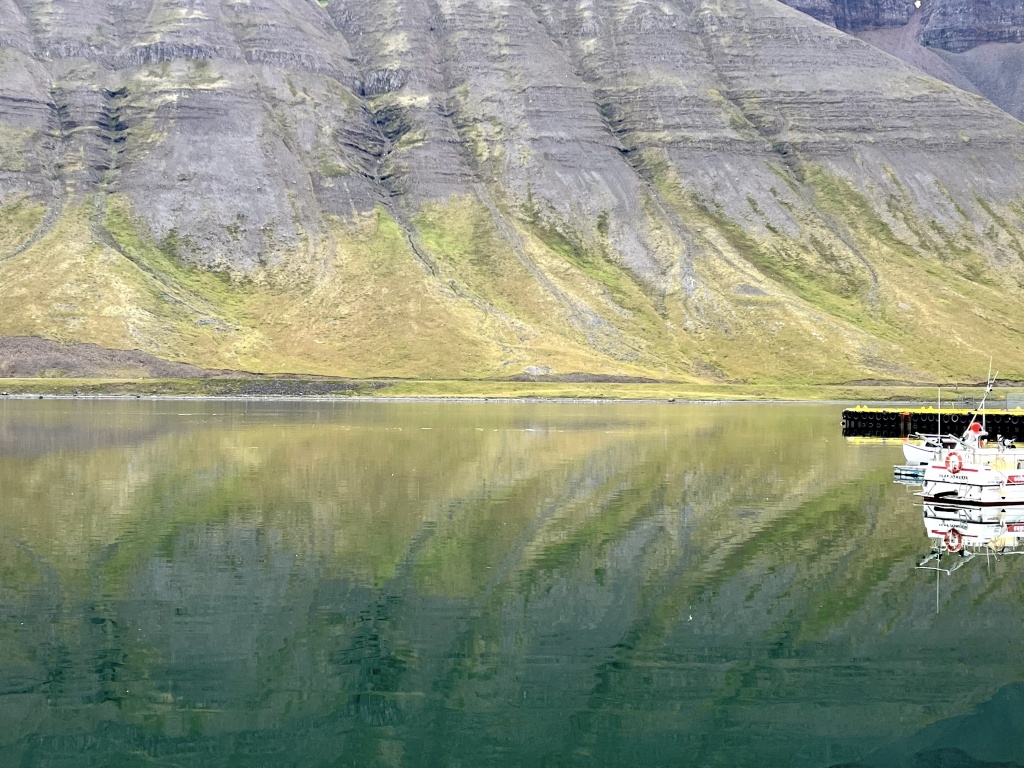
It was a more open and a more normal place than I’d imagined. There’s still a Thai restaurant, in a small shopping centre; it didn’t seem like an oddity.

This is a good place to bring up children, said a woman who served me in a café. We can let them go free in the street.
The hamburger bar/general store sold me a Marine Band in G – a better harmonica than I could find in the music shop in Reykjavik, which only sold novelty ones (“Jambones”). What are you doing out here in the wild west?, the proprietor asked. Later I remembered the tune to The Wild Rover and played it to myself in the street.
Outside the Westfjords History Museum, in pride of place, is a device that the Icelandic coastguard used to cut the lines of British trawlers in the “50 km cod war” of 1973 and the “200 km war” of 1975.

The waiter in the Dokkan micro-brewery was English. He said he speaks customer service Icelandic. This was not common among foreigners I met. The Dokkan is on the edge of town on a road to nowhere. It is there in order to be one of the first things cruise ship passengers see when they land.
V – From Isafjörður back to Seyðisfjördur

In the service station at Hólmavik, off the bus from Isafjörður, I chatted with the man from that bus who speaks English. He’s a printer. He spent most of his career working on Winnipeg’s Icelandic-language newspaper. (Unlike for most other nationalities, there are more Icelandic-Canadians than Icelandic-Americans.) He retired to an old people’s home in Isafjörður when his wife died. The driver, whose wife has also died, used to captain fishing boats. Now they live next door to each other. The fisherman invited the printer to come along with him for the (six hour return) rides each Friday and Sunday.
From Hólmavik, to pick up the bus east to Akureyri, you have to go south. I went to Borgarnes where I learned about the early settlement. The farms nearby are named after vikings – themselves named in the sagas – who settled them in the 900s. I went to a new age café, the Kaffi Kyrrð. A man told me he liked my suit. A woman, an accountant, told me that she and her husband own a sixth of an old farm in the north, so they often go north. Once, driving on the ring road in the south, they went to a pizza place in Vik where the menu was only in English, not Icelandic. “It is not good enough”, she said to the manager. Her son and her husband told her she had spoken too strongly.
Then I went to the tech shop. I’m surprised to be able to get this USB-Mac connector here, said I patronisingly. “As well as the people of Borgarnes we have summer houses, we have tourists”, said the man. “We sell hundreds of these each summer.”
From there it took two days to get back to Seyðisfjördur. There the sun was shining and some people swam in the fjord (I regret not joining them). I had a drink at a picnic table outside the Aldan hotel.

I booked to eat later. – Inside or out? – What time does the sun go in? – I don’t know, we have never seen it like this.
(In fact, the sun went behind the mountain at 5.30. I had done right to eat inside.)
Seyðisfjördur was the smallest and, with Isafjörður, the most outdoorsy place I went. On my last day in Iceland I watched a bearded man in a blue anorak – most of the men who visited that town had beards – gently land a drone on his outstretched hand, beckoning it in as if it were a bird. I walked inland up the road, looking for Iceland’s oldest operational hydropower plant. I found, instead, a cemetery with six Commonwealth war graves. The graves I used to find in North Holland North cemeteries, on Sunday morning bike rides, were of shot down airmen. Here they commemorated men from the navy (HMS Hussar, HMS Achilles, HMS Sheffield) and the army (the King’s Own Yorkshire Light Infantry).

Like other people heading for the ferry, I spent my last couple of hours in Iceland at the Skaftfell pizza restaurant and art centre. The manager, in his 40s, had a pepper mill of Italian size. Unlike in Italian restaurants, he let me use it myself. His assistant was a young Goth. She talked about the kerfuffle of getting on the boat with a car. I asked her if she was British, knowing that word. Half.
VI – Some noticeable things
- Compared to mainland Europe, Iceland’s roads had a lower proportion of lorries (why? I don’t know) and more camping cars (why? tourists). Many of the lorries were in the livery of the Smyril line, the Faroese operator of the Norröna.
- Route 1, the road that encircles Iceland, was only finished in 1974, presumably ending coastal communities’ isolation. Norway’s Hurtigruten began serving isolated coastal communities by boat in 1893. Why doesn’t Iceland have Hurtigruten?
- In the middle ages this country was full of violent disputes. Why are there no castles, nor even fortified farmhouses like you see in Brabant Wallon in Belgium? Even Finland has six castles.
- On the bus to Akureyri, a cyclist kept his helmet on. In the hamburger bar in Isafjörður, a couple of ten or twelve year old boys did the same. In bars and cafés in Akureyri, it was quite normal for people to keep their hats on. (I found myself doing the same.) And on the boat back, a cyclist buying coffee wore his helmet.

Art gallery café, Akureyri

SS Norröna
- Pot plants made up many gardens.

Akureyri
- (Like the other countries of this journey), if you stood aside in a bar or restaurant to let a waiter go through, the waiter didn’t stand aside themselves; they didn’t insist on you, as the customer, going first after all.
- Lots of cats, not many dogs.

Reykjavik
- Icelanders asked my name, gave theirs.
- The food was commendably spicier than on the rest of the trip. For example, wolf-fish at the Messinn restaurant in Reykjavik and falafel at the café in Akranes.
VII – The trip home
From Seyðisfjördur I travelled back to Denmark – on the Norröna once again.
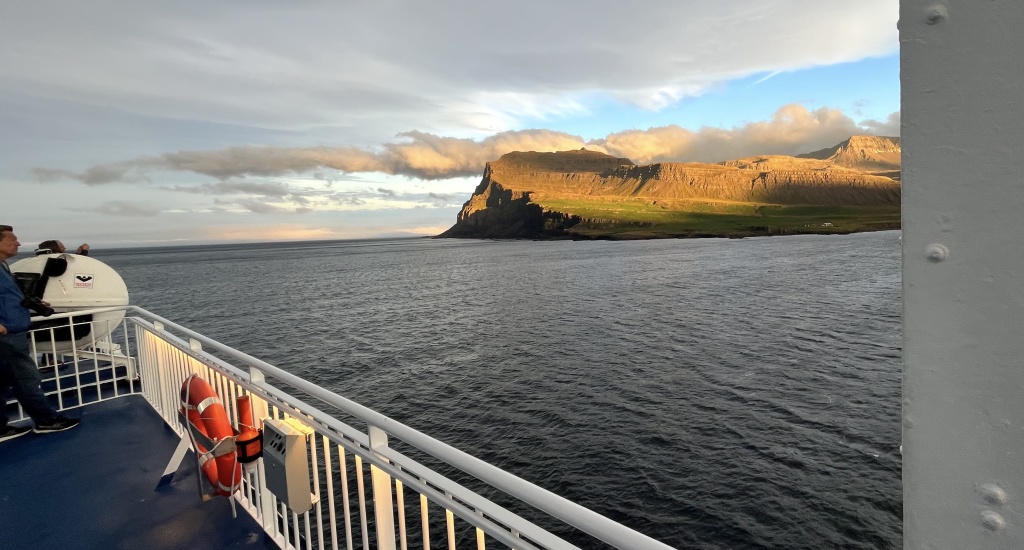
Last view of Iceland
The ship made a three hour stop in Tórshavn in the Faroes. I looked at this cathedral tower, this kiosk, these turf roofs with a new eye. You do not see these forms in Iceland.

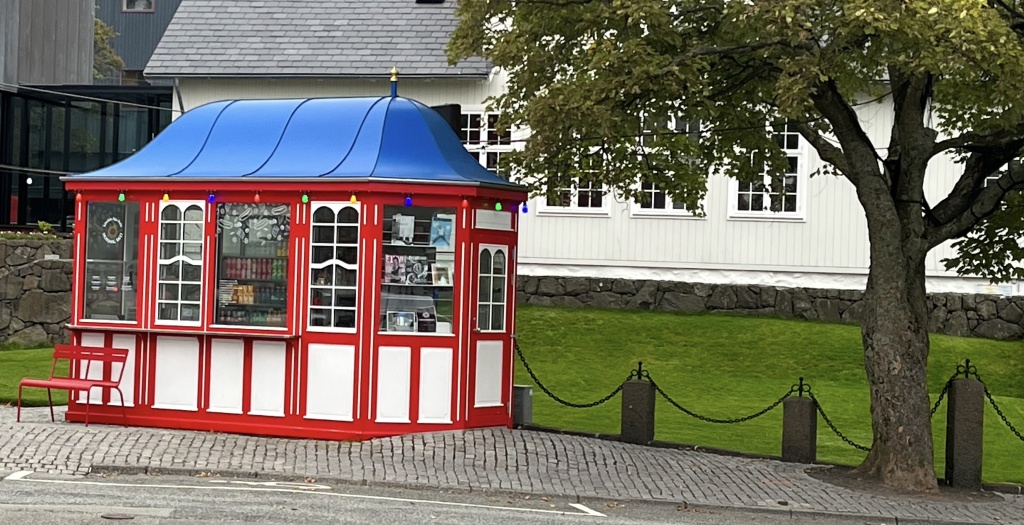

On the journey back I was greeted by people who remembered me from the way out. I felt like the protagonist of Sebastian Japrisot’s detective story The woman in the car with the glasses and the gun. In Egilsstaðir, the couple who run the restaurant recognised me. I told them about my trip. My grandfather was born in Isafjörður in 1911 said the chef, the husband. He lived in a grass house. He would eat all of the fish, even the bones. The big change was when the Americans came in the war. I said the Faroes still have turf roofed houses. He said maybe we’ve changed too quickly.
The family moved to Egilsstaðir to get away from the traffic lights of Reykjavik and to have good air for their children.
On the Norröna, the Swedish bartender who’d served me an aquavit on the Hirtshals-Tórshavn stretch said welcome back.
In the same café in Tórshavn was a man who I’d asked, on the journey north, to speak more quietly on his zoom call. He was there with half a dozen others, talking loudly. On his way out he said, pointedly, All good? Nice and quiet. His remembering me made him seem dangerous.
+++
Soon after I got back to Denmark it was summer again. As I travelled home I sat outside for every meal. I ate French food on the narrow terrace of the Klassisk 65 restaurant in Aarhus. (Stern buildings, fun-loving hi-there street life. A woman’s big trousers were the yellowest thing I ever saw.4 When did these countries change?) The next night I ate Italian food at the Goldenen Einhorn in Aachen. Couples danced in the heat under a nearby dome.
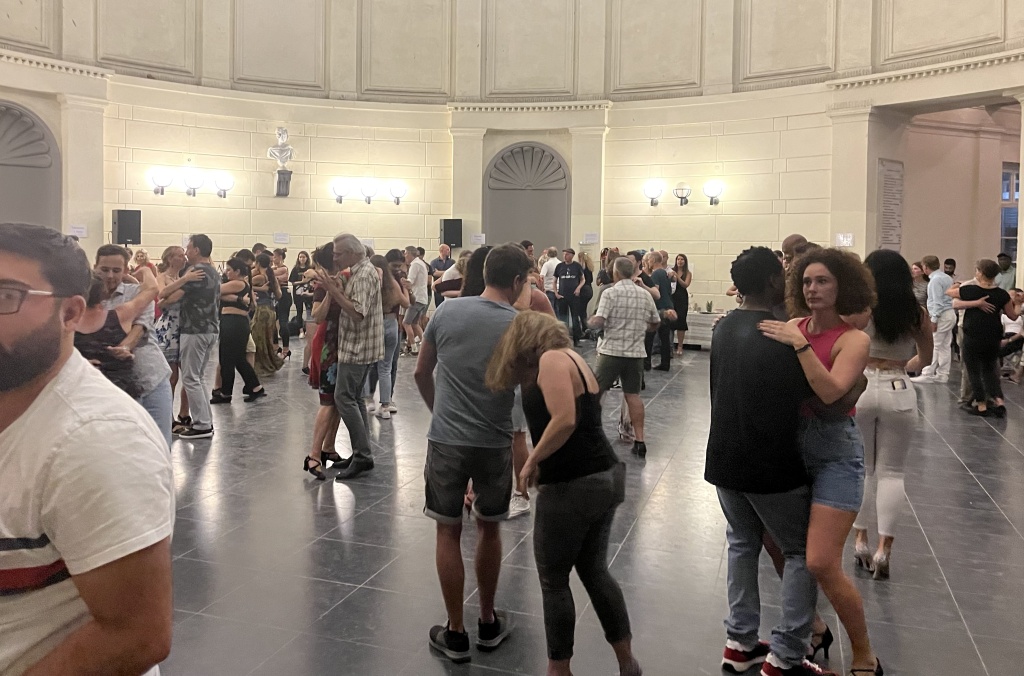
On the last day of my holiday I ate cheddar scones for lunch at the Living Room near the Council in Brussels with an old friend, and Vietnamese, with more old friends, in the pedestrianised street off Place Jourdan, in the evening at the Bol de Riz where I always used to go. Next morning I caught the Eurostar home.
VIII – Thoughts
I don’t know what to make of Iceland. Is it an old country? The Settlement Museum in Reykjavik has, in its basement, an actual turf wall from “871 +/-2”. They know its date from some volcanic ash on top of it that comes from a particular eruption. People spoke easily of “the settlement” in the years up to 1000. Or is it a young one? The road that encircles the country only being finished in the 1970s; turf roofs set aside; most buildings new.
I come from the country with the first rural-urban transition. Britain had an urban majority in the 1851 census. Iceland ceased being majority-rural around the same time as the United States, between 1910 and 1920. By then, though, settlers had lived a rural life in Iceland for a thousand years – compared with a hundred years or so in much of the US. How did that transition feel?
Does Iceland look to America (the island’s car domination, the vehicles themselves, the long story of the Keflavik airbase) or to Europe (football, the ferry link, the language)?
Is it a small place or a big one? Arriving in the east, it feels big because it is empty.

Officially, at about 100 000 square km, it is medium sized – comparable to Hungary or Portugal. In terms of land that can be used for everyday purposes, though, it is small: a circumference / coastline / ring road and a bit more.
In Reykjavik the barber told me he had lived in the city all the sixty years of his life. You must have seen big changes, I said, thinking of the rush to Reykjavik that features in many of Arnaldur Indriðason’s Erlandur novels, of the economic boom. Yes, he said, most of all the tourism of the last ten years.
Looking back, I think there is a tourist Iceland. It is focussed on the outside, natural world, geysers and waterfalls and glaciers, visited by car or coach and serviced to quite an extent by non-Icelanders.
Then there is an everyday Iceland, focussed on the inside world. While the objective of Seiji Kanai’s wonderful game Love Letter is to get your letter through to the Princess, the Icelandic variant, Hvèr stal kokunni úr krúsinni?, is cake and biscuit themed. One card represents kleinur doughnuts like those I ate for breakfast in the Mokka Kaffi in Reykjavik. Your objective is to find out who stole the cakes from the jar.
I wasn’t really in touch with either of these layers, neither the tourist nor the everyday, and that is why my time there felt strange. I felt I was missing the point of Iceland.
What is certain – and it surprised me – is that this is a lighthearted, easygoing, playful place.

The Unknown Bureaucrat, Reykjavik
I told the accountant I met in Borgarnes that the cliché we have of the Nordic lands is that people are melancholic. – Melancholic? – Sad. – We are not sad.
+++
1 https://en.wikipedia.org/wiki/List_of_countries_by_vehicles_per_capita
2 The Faroes are not in Schengen. Back home, learning about how we Brits are now limited to spending 90 days in Schengen in any 180 day period, I realised I should have demanded passport stamps to avoid the three days I spent in the Faroes counting towards the ninety.
3 Fischer was imprisoned in Japan in 2004 on charges laid by the American authorities. According to Wikipedia, Spassky wrote a letter to US President George W. Bush, asking “For mercy, charity,” and, if that was not possible, “to put [him] in the same cell with Bobby Fischer” and “to give [them] a chess set”.
4 This goes along with a quote from Kiran Millwood Hargrave’s novel The Mercies, set in northern Norway, which I read recently, with thanks to the Local Government Chief: “At last, there is movement on the deck [of a ship arriving from the south]. Maren can see dark figures against the grey sky and then, incongruous as the sun in winter, a burst of bright yellow appears from somewhere below deck. It isn’t a colour Maren has seen before… Five of the figures, including the one in yellow, are lowered slowly in a rowing boat.”


